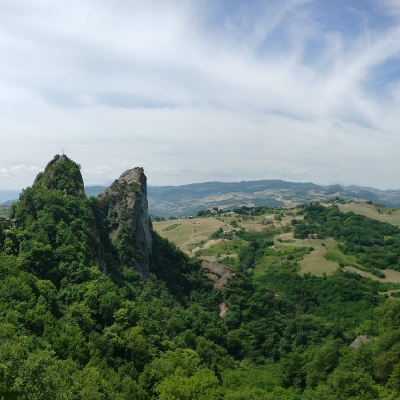
Sassi di Roccamalatina Regional Park
Vivi la natura di Marano, Guiglia e Zocca. Un parco naturale ricco di flora e fauna, con guglie di arenaria che spiccano sul paesaggio

Romanesque architecture is one of the main testimonies of the Middle Ages. Whether they are famous cathedrals or small parish churches, many churches built between the eleventh and twelfth centuries can be seen as they were built. And still today, they speak a precise language: that of the Romanesque style.
Italy is full of historical monuments. They are one of its greatest riches and testify to a fervid culture that came to us through the centuries. In the Terre di Castelli, the hilly area in the province of Modena, one of the most interesting cultural itineraries takes us on the hunt of churches, parishes and oratories having in common a particular style: the Romanesque.
But how do you recognize a Romanesque church? Here we have to uncover some school memories. Without getting into too much technical detail, basing ourselves on simple observation, the Romanesque churches usually have thick walls, round arches, semi-circular apses and crypts. They have an austere look, no frills, only a few decorations with a very recognizable style. In the Emilia area, these are mainly rows of blind arches that punctuate the outer walls as if they were embroidery. In the most prestigious buildings, we also find portals surrounded by bas-reliefs with recurring scenes such as the representation of the seasons.
The particularity of the decorations typical of the Romanesque style is that they resemble each other at different latitudes, in various parts of Italy and Europe. A testimony to the fact that the Middle Ages were anything but a static period. People moved around (and a lot!) Using the great pilgrimage routes still known today: for example the Via Romea, which connects the Brenner to Rome, crossing the Terre di Castelli. In this way, even constructive and decorative techniques could travel together with people and, consequently, spread.
We can therefore say that the Romanesque is a great universal language that unites places and people still today. It is a common root of European culture, an architectural style that has developed hand in hand with the development of the buildings, cities and trade, protagonists of the eleventh and twelfth centuries. In practice, it is a important living testimony of the Middle Ages, which has brought us here.
And now, all that remains is to go hunting for signs that medieval culture and Romanesque architecture have left behind among the splendid views of the Terre di Castelli.
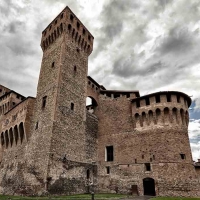
The Middle Ages also surfaces in civil constructions. One of them is the Rocca di Vignola. Although it was enlarged and transformed into an elegant residence in the 15th century, the building was born as a defensive bulwark. Its presence has been documented since the tenth century, protagonist for centuries of sieges and struggles between families of Bologna: a stormy past that can still be read in its external structure, imposing and severe.

Savignano sul Panaro is one of the suggestive medieval villages that dot the Emilia-Romagna region. It was once an ancient castle, dominated by a stone tower. Take a walk and find out how the traces of the Middle Ages are mixed with subsequent constructions creating a true itinerary through history. Among all, the seventeenth-century Oratory of San Rocco and the sculptures of its most illustrious citizen, the artist Giuseppe Graziosi.

Among the castles, built to guard Modena's borders, the Castellino delle Formiche stands out, taking us back in time. The houses perched on the rock surrouning the medieval tower, can still be seen today. Before it belonged to the Malatigni family, then to the Montecuccoli family, the ancient castle did not change its suggestive outlook over an expanse of woods and fields up to the Panaro valley

Ancient ruins always have their charm, especially when they seem fused with the nature surrounding them. This is the case of Montequestiolo, an ancient border fortress that belonged first to the Montecuccoli family and then to the Machiavelli Rangoni family. Today, its surviving tower dating back to 1300 and the original portal entrance continue to dominate the forests and hills of Zocca.
There is a place in the territory of the Terre di Castelli that manages to fascinate everyone, young and old, nature lovers even more so. It is the Regional Park of the Sassi di Roccamalatina, a protected natural area characterized by impressive (and very ancient) spiers of sandstone that stand out against the surrounding landscape. The numerous paths allow you to explore the park and discover its beauties, not only natural, but also historical and cultural.
Among these, the Pieve (Parish church) di Trebbio stands out. Located in the heart of the Park, overlooking the rocky spurs that are its symbol, it is one of the starting points for different paths. But above all, together with its bell tower and its baptistery, it is one of the best-preserved Romanesque testimonies in the Apennines. The parish church has clean and essential forms - no frills, indeed - with its carved portal, capitals and original sculptures, some of them dated before the eleventh century. It is the testimony of a building of worship built even earlier in the same position and then rebuilt in Romanesque style. All this, perfectly blended with the surrounding landscape: the fabulous views of the Sassi di Roccamalatina, also crossed - not by chance - by the Via Romea route.
Even outside the Park of the Sassi di Roccamalatina the landscape of the Terre di Castelli continues to give emotions and appointments with history. Among the hills covered by the vineyards between Castelvetro and Levizzano - the same ones where the Lambrusco Grasparossa wine can be found - there is another small pearl of the Romanesque: the Oratory of San Michele Arcangelo.
Small and rectangular, its magic consists in being a trove of six ancient frescoes depicting saints. Among these, we recognize Mary Magdalene, St. John the Baptist and St. James, painted with the inevitable pilgrim's staff. The exterior, on the other hand, remains austere, as in the best tradition of the early Romanesque, only the facade decorated by the classic rise of blind arches.
Continuing to tour these hills and in the direction of Marano sul Panaro, the unmistakable clues of the Romanesque continue. To discover them, just stop at the ancient village of Denzano, an ancient castle of medieval origin that today only offers a small taste of its former ancient glory. Among these, the Romanesque apse of the Church of Santa Maria Assunta, built in imitation of the famous Cathedral of Modena. It is even thought that it could have been done by a student of Lanfranco, the architect who designed Modena cathedral. The Romanesque apse remains the only element of the medieval period, while the rest of the church was rebuilt a few centuries later: a detail that gives it even more charm.
The Romanesque hunt continues down towards the plain. There are many churches of interest in the territory of Castelnuovo Rangone and, among these, Santa Maria del Tiepido presents some elements of Romanesque style. The Church, dedicated to Santa Maria della Neve, is located on the bank of the homonymous torrent and is mentioned in documents since the twelfth century. Despite restoration by its current owners, it has not lost its medieval charm, rightfully preserved.
After Santa Maria del Tiepido, we are just a few kilometers from Modena, where we find our "grand finale" of the Romanesque itinerary. In fact, the city's Cathedral is the true symbol of Romanesque architecture in Italy and in Europe. Its forms have been resumed and reworked in many medieval churches in northern Italy. Here we find the semi-circular apses, the decorations with blind arches, the decorated portals and particular sculptural cycles: not only the months, but also the stories of the Bible, of the patron San Geminiano and even of King Arthur.
Founded in 1099, Modena Cathedral has a unique history. While the city was without a bishop because of a previous excommunication, it was the Modena people who promoted the construction of the Cathedral without waiting for the permission of the ecclesiastical hierarchy. Moreover, contrary to what happened for other works of the same period, we know the names of the main artists who built the building: the architect Lanfranco and the sculptor Wiligelmo.
And so, from the great example of the Modena Cathedral to the parishes, churches and oratories scattered in the hills of the Terre di Castelli, the Romanesque is still alive. Linked to one another by the invisible thread of history, they are an integral part of the Modena culture and landscape: a heritage that one never ceases to delight.

Vivi la natura di Marano, Guiglia e Zocca. Un parco naturale ricco di flora e fauna, con guglie di arenaria che spiccano sul paesaggio

Nei pressi di Marano sul Panaro si trovano storici abitati immersi nella natura.
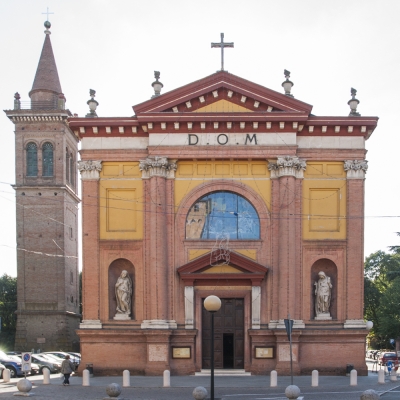
Un viaggio fra le chiese storiche del territorio di Castelnuovo Rangone
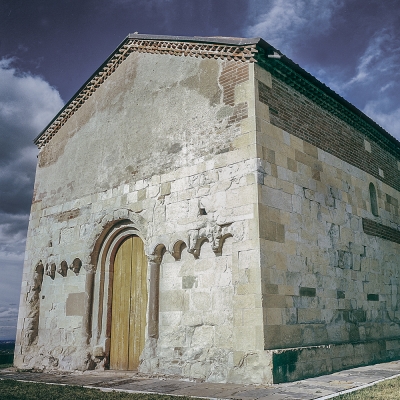
Sulle Colline di Castelvetro un antico Oratorio con vista mozzafiato

Un'antica Pieve romanica nel cuore dell'Appennino modenese

Guiglia overlooks the hills and the Emilian plain, surrounded by traces of its long history and a natural park.

Marano sul Panaro is an ancient village, inhabited since prehistoric times, surrounded by nature and orchards.
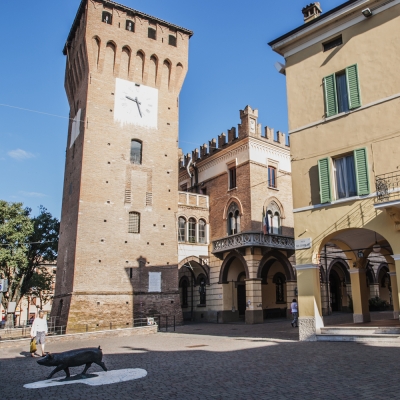
Castelnuovo Rangone is at the same time an ancient and modern village, with a strong vocation for the food industry.
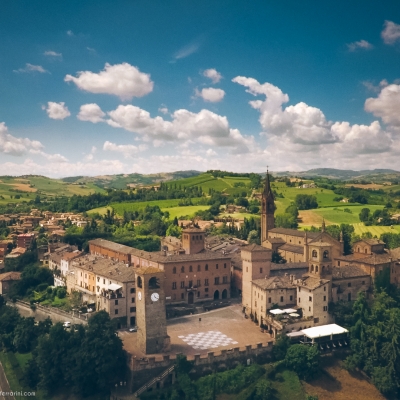
Castelvetro di Modena is a medieval village full of charm, against the backdrop of the hills where Lambrusco Grasparossa is produced.